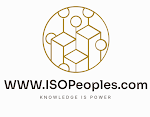Introduction:
In the complex world of food safety management, FSSC 22000 Certification stands as a beacon of trust and quality. For those new to the concept, this certification can seem like a labyrinth of standards and processes. Fear not! In this beginner's guide, we will illuminate the path to understanding FSSC 22000 Certification, step by step.
Section 1: What is FSSC 22000 Certification?
FSSC 22000, which stands for Food Safety System Certification, is a globally recognized standard that ensures food safety management systems meet rigorous criteria. It is essential to note that FSSC 22000 Certification is not just about producing safe food but also about managing the entire food safety process effectively.Section 2: Why FSSC 22000 Certification Matters
Understanding the significance of FSSC 22000 Certification is vital. It goes beyond regulatory compliance; it's about building trust with your customers and stakeholders. This certification demonstrates your commitment to food safety, which is paramount in the food industry.Section 3: The Key Components of FSSC 22000 Certification
Now, let's delve into the core components that make up FSSC 22000 Certification:3.1 Food Safety Management System (FSMS)
At the heart of FSSC 22000 is the Food Safety Management System. This is a systematic approach to managing food safety throughout the entire supply chain. It involves a series of processes, procedures, and documentation to ensure food safety at every step.3.2 ISO 22000:2018
FSSC 22000 is built on ISO 22000:2018, an international standard for food safety management systems. This standard provides a framework for developing and implementing an FSMS. It covers everything from hazard analysis to monitoring and continual improvement.3.3 Prerequisite Programs (PRPs)
PRPs are the foundation of any FSMS. These are the basic conditions and activities that are necessary to maintain a hygienic environment throughout the food chain. PRPs cover areas such as sanitation, pest control, and personnel hygiene.Section 4: The Certification Process
Getting FSSC 22000 certified involves several steps:4.1 Gap Analysis
The process begins with a thorough gap analysis. This helps you identify the areas where your current practices fall short of FSSC 22000 requirements.4.2 Documentation
You'll need to create and maintain extensive documentation of your FSMS. This includes policies, procedures, records, and reports.4.3 Training
Ensuring that your team is adequately trained in food safety is crucial. Training programs must align with FSSC 22000 standards.4.4 Internal Audits
Regular internal audits are conducted to assess the effectiveness of your FSMS. This is a vital step in preparing for the external certification audit.4.5 Certification Audit
An accredited certification body will conduct an external audit to determine your compliance with FSSC 22000 standards. This audit is comprehensive and will evaluate all aspects of your FSMS.4.6 Certification Decision
Once the audit is complete, the certification body will make a decision regarding your certification status. If successful, you will receive FSSC 22000 Certification.Section 5: Maintaining FSSC 22000 Certification
Achieving FSSC 22000 Certification is a significant milestone, but it's not the end of the journey. To maintain your certification, you must:5.1 Continual Improvement
FSSC 22000 requires organizations to continually improve their food safety management systems. This involves analyzing data, identifying areas for improvement, and taking action.5.2 Surveillance Audits
After initial certification, your organization will undergo regular surveillance audits to ensure ongoing compliance with FSSC 22000 standards.5.3 Keeping Up with Changes
Standards and regulations in the food industry can evolve. It's crucial to stay informed about any updates to FSSC 22000 and make necessary adjustments to your FSMS.Section 6: Benefits of FSSC 22000 Certification
Now that you have a solid understanding of FSSC 22000 Certification, let's explore the numerous benefits it brings:6.1 Enhanced Food Safety
The primary benefit is, of course, improved food safety. This certification helps prevent foodborne illnesses and contamination.6.2 Competitive Advantage
FSSC 22000 Certification sets you apart in a competitive marketplace. It demonstrates your commitment to quality and safety.6.3 Global Recognition
This certification is internationally recognized, allowing you to expand your reach into global markets.6.4 Customer Confidence
Customers trust brands with FSSC 22000 Certification, knowing their food is safe to consume.6.5 Legal Compliance
FSSC 22000 Certification ensures that your organization complies with food safety laws and regulations.Conclusion:
In the intricate world of food safety, FSSC 22000 Certification shines as a symbol of excellence. It signifies your dedication to providing safe and high-quality food products. As you embark on the journey to FSSC 22000 Certification, remember that it is a step-by-step process, and the benefits are well worth the effort. So, take that first step toward ensuring food safety and building trust with your consumers through FSSC 22000 Certification

